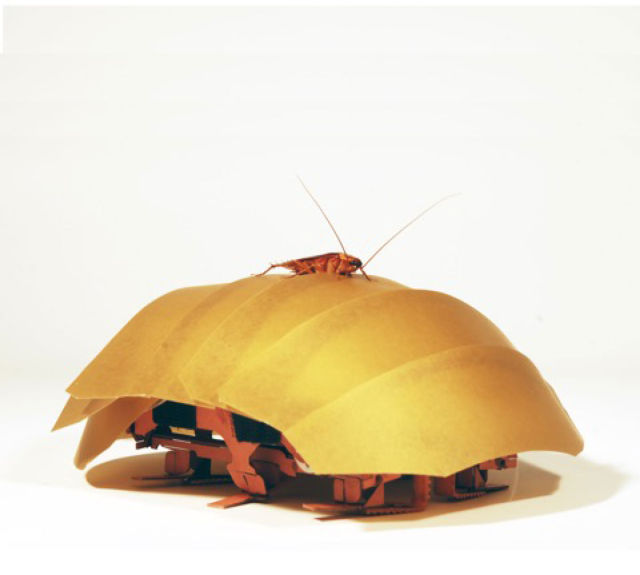
Just about everyone who has experienced urban living also has experienced some unwanted urban visitors: cockroaches. These agile beasts can make their way into locations that seem sealed off from the world outside the apartment. When found, they scramble out of sight with remarkable speed.
Researchers have subjected cockroaches to obstacle courses and full-body stress tests that would turn lesser animals to jello. The results show that despite their hard exoskeleton, roaches are remarkably flexible and use that flexibility to navigate spaces that are a fraction of their normal body size. Inspired by their results, the authors have built the first generation of a robot series based on cockroach mechanics.
We tend to portray exoskeletons as hard, rigid surfaces. And compared to skin, they are. But as anyone who has ever smashed a roach will tell you, they don't break with a crispy, snapping sound—it's more of a squish. To find out just how much give the exoskeletons have, a new paper by authors Kaushik Jayarama and Robert Full of Berkeley studied the American cockroach. "We selected the American cockroach, Periplaneta americana, because of its high speed, maneuverability, robustness, and tenacity to enter and leave spaces," they write.
To start with, they anesthetized some animals and added loads to specific body segments. They found that most of the roach's body could handle up to 900 times its entire body weight without injury—the animals were able to walk and fly normally despite the crushing.
They then trapped the cockroaches in a small space, with only tiny cracks to allow their escape. Even though typical cockroaches are over 12mm high, they could consistently make it through cracks as small as 3mm—"the height of two stacked US pennies." The activity is just as frantic as it appears when you chase a roach around your kitchen cabinets, with a short period of testing the crack with the antenna, after which "the cockroach typically paused briefly and rammed into the crevice head-first multiple times, often hitting the gate, before pitching downward to the enter the crevice."
At 3mm, the roaches would frequently abandon the attempt, and a few even got stuck. But many of them successfully made their way through. During this time, their bodies flattened so much that the location of their legs changed dramatically, and their normal walking gait changed accordingly.
You'd expect that increasing the friction created by the surface of the crevice would slow the roach down, but you'd only be partly right. Jayarama and Full found that increasing the friction against the roach's back slowed it down and shortened its stride. But when changing the friction of the bottom surface, they found that a small increase gave the roach a burst of speed, but a larger one slowed it down again.
Although Jayarama and Full still say certain aspects of roach locomotion need further study (they're especially intrigued by the roaches' feet), what they've learned so far has allowed them to design a small, flexible robot that can be squished to under half its normal height and still keep working. Although the robot is much bigger than a roach, it's completely self-contained: all the electronics and power are internal. The authors hope that they can eventually build something that's able to explore things like collapsed buildings—a "search-and-rescue robot."
PNAS, 2015. DOI: 10.1073/pnas.1514591113 (About DOIs).
reader comments
59